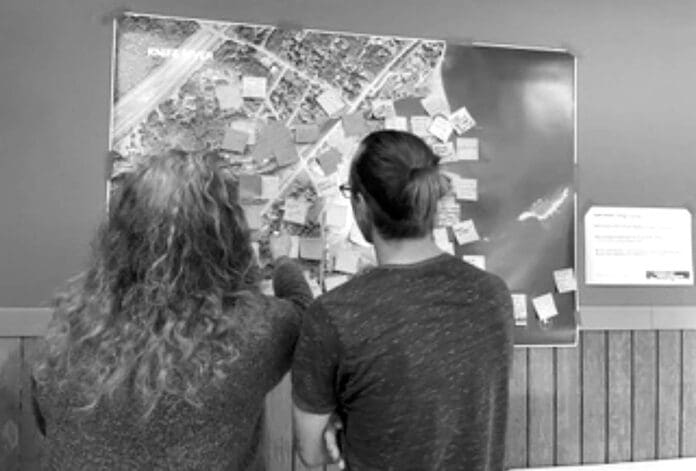A new community-driven initiative aims to shape the future of Knife River by harnessing both local input and university expertise. In collaboration with the University of Minnesota and funded by state legislation passed in May 2023, the unincorporated town is embarking on a comprehensive planning process to guide its future growth and preservation efforts.
Facilitated by David Abazs, Executive Director of the Northeast Regional Sustainable Development Partnerships (University of Minnesota Extension), the project seeks to empower small Minnesota communities like Knife River.
Patricia Ingle, a member of the Knife River Recreation Council Board of Directors, submitted the application for the Empowering Small Minnesota Communities Grant, which resulted in Knife River being selected to receive help from the university to work on infrastructure and sustainability.
The University of Minnesota is offering a multi-disciplinary approach through its various departments, including the Center for Transportation Studies, the MN Design Center, the Humphrey School of Public Affairs, and the Center for Urban and Regional Affairs. Abazs serves as a key liaison between the community and these university resources.
“Being from a small community, it’s kind of hard to build a plan and get the documents together to be eligible for those larger grants. That’s what this initiative was designed for,” said Abazs.
Two separate listening sessions were held on Thursday, October 3rd in Knife River, with the aim of collecting ideas and concerns from residents. Ninety-seven people participated in the two meetings in person, and ten attended online, which Abazs said represents about 30% of the community.
“There is an incredible leadership team in the community, and it’s been evident from the beginning the expertise the community brings and the different skills that they bring,” said Abazs. “So this is an opportunity to have that community conversation to imagine and develop and explore infrastructure, whether it’s social or physical infrastructure of the community, and imagine and design what they want Knife River to look like in the future.”
Ursala Lang, a representative of the MN Design Center, emphasized the importance of collaboration. “One of the many perks of this process is to think with the community collaboratively around what kind of strategy you might want to adopt for Knife River’s future, and to help identify actionable, fundable projects,” Lang said.
Those who gathered at the listening sessions had a lot of ideas and participated in an exercise taking a multi-scale approach, from the regional level, involving neighboring communities like Two Harbors and Duluth, down to Knife River’s core.
“We’ve looked at Knife River at four different scales, each highlighting connections and questions that might spark community input,” Lang said. Participants added their thoughts to maps around the room, contributing ideas for future projects and helping identify Knife River’s assets and obstacles.
“Each meeting the entire maps, of the four different maps that represented different scales of the communities, and the relationships were just totally filled with sticky notes of different thoughts, different ideas, different opportunities,” said Abazs.
Of the ideas voiced during the session, there was interest in creating a safer area for those who want to walk for exercise, building a pool, and adding more biking trails. Abazs joked that during a similar exercise with a Girl Scout troop, there had also been a high interest in a pool—though that one involved dolphins.
Another key goal is to preserve Knife River’s unique Scandinavian culture, including its fishing families and local organizations such as the Heritage Center. Additionally, the popular Julebyen Christmas event, which draws 6,000– 7,000 visitors annually (according to a member of the event), is seen as a vital part of the town’s identity.
However, there are also significant challenges. As an unincorporated community, Knife River has historically struggled to leverage funding and resources for development. “That was the push for legislation,” Abazs explained, noting that unincorporated towns often lack the governmental structure needed to access certain funding streams.
The College of Design will now review the sticky notes from the maps and look for themes and ideas to explore in future conversations.
“We hope by June to have some steps forward, folders filled with information, photos, and designs that will help the community, if they choose to do so, reach out to try to get some of those additional funds to implement some of their dreams and some of their aspirations,” said Abazs.
Through ongoing listening sessions and surveys, Knife River will have the chance to design its future— one that balances cultural preservation with thoughtful growth, backed by the expertise of the University of Minnesota.



